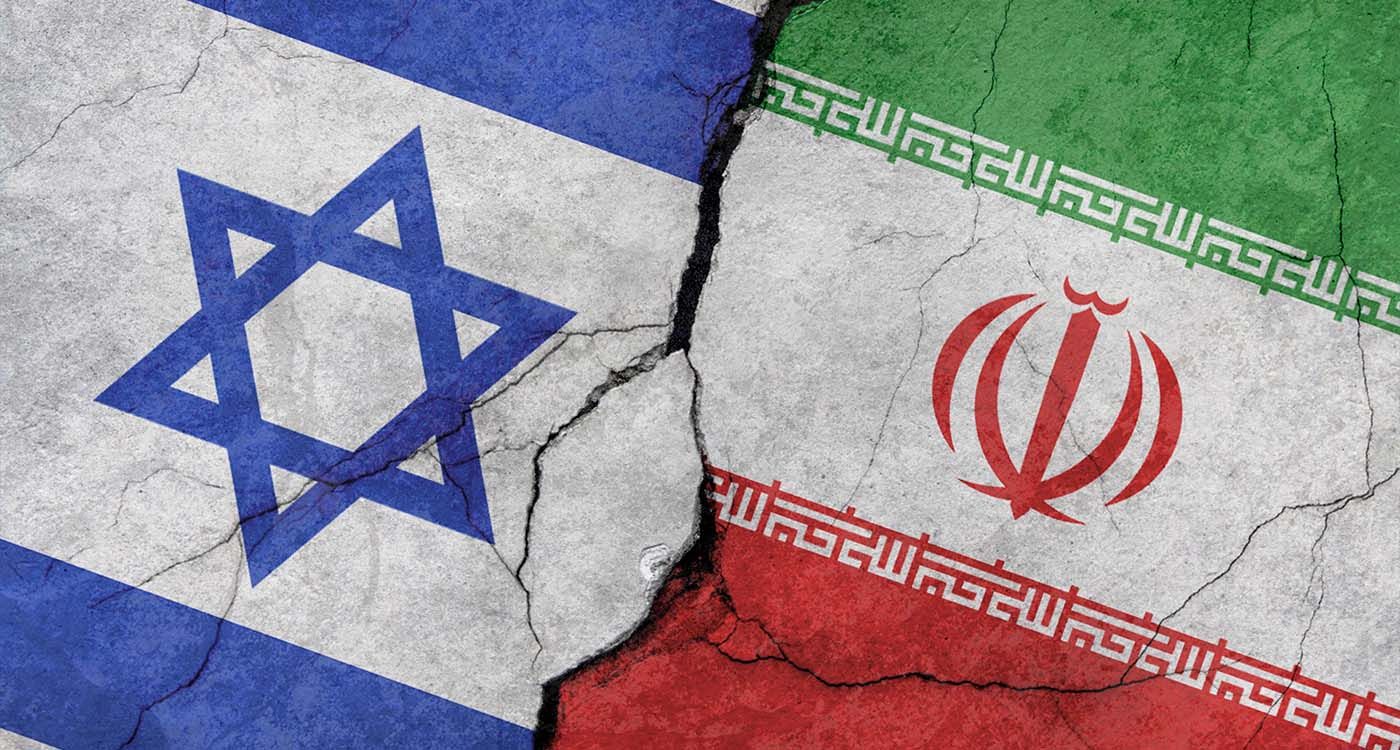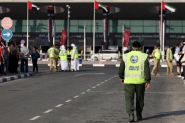- Home
- Middle East
- How Credible Is Iran-Israel's War of Words?

Listening to the reverberating rhetoric between the key players in the Middle Eastern conflict feels akin to witnessing a trivial quarrel. However, when words become the currency of fools, how can we gauge the credibility of the threats exchanged between Iran and Israel?
A Volatile Rhetoric
In the aftermath of the attack launched by Israel last Saturday against its Persian rival, Iranian President Masoud Pezeshkian vowed that his country would respond with “wisdom.”
On Sunday, Iranian Supreme Leader Ayatollah Ali Khamenei cautioned against both “exaggerating and downplaying” the Israeli strikes on military sites in Iran.
A senior Iranian official informed the American news channel CNN that Iran was preparing a “definitive and painful” response, likely to occur before the upcoming elections, according to the network's report on Wednesday.
Additionally, Mohammad Mohammadi Golpayegani, chief of staff to the Iranian Supreme Leader, stated on Al-Mayadeen television on Thursday that an Iranian retaliation was “certain,” emphasizing that it would be “strong” and would make “our enemy regret” its attack.
On the Israeli side, Army Chief Herzi Halevi claimed that Israel had shown restraint during its weekend assault on Iran. Military spokesperson Daniel Hagari asserted that should Iran launch retaliatory strikes, Israel would be “compelled to respond.”
The Economic Imbalance
However, “wisdom” requires a comprehensive evaluation of the costs and benefits associated with available alternatives. According to World Bank data, Israel boasts a GDP per capita of approximately $55,000, while Iran's GDP per capita lags at around $6,000. This stark contrast highlights which nation is better equipped to endure the strains of war.
Yet, this economic disparity tells us little about the military capabilities of the two adversaries. In addition to the acclaimed Iron Dome, Israel has three other air defense systems at its disposal: David's Sling, the Arrow systems and THAAD.
The Israeli Defense Umbrella
David's Sling is designed to target long-range rockets and cruise missiles with ranges of 40 to 300 kilometers. Each launcher can hold up to 12 missiles, neutralizing enemy projectiles solely through kinetic impact. Just two David's Sling batteries would be sufficient to cover the entirety of Israeli territory.
The Arrow systems comprise two variants. Arrow II can intercept missiles up to 500 kilometers away, while Arrow III extends that capability to an impressive range of 2,400 kilometers, targeting ballistic missiles that travel beyond the atmosphere (over 100 kilometers in altitude).
Adding to this defense network, THAAD (Terminal High Altitude Area Defense) was deployed by the United States, which sent a battery and approximately 100 soldiers to the Hebrew State on October 13, enhancing the nation’s missile defense against Iranian threats.
THAAD operates during the terminal phase of a ballistic missile's flight, intercepting threats as they begin their descent toward their intended targets. It can engage a variety of missile types based on their ranges: short-range missiles (less than 1,000 kilometers), medium-range missiles (1,000 to 3,000 kilometers) and intermediate-range missiles (3,000 to 5,500 kilometers). The system is capable of engaging targets at a minimum distance of 200 kilometers.
Despite Israel’s sophisticated air defense infrastructure, the Financial Times reveals that the country may face a shortfall of interceptors to effectively counter missiles from the pro-Iranian axis.
Thus, the deployment of the American THAAD system—integral to an overarching defense strategy—could be interpreted as a sign of potential vulnerabilities within Israeli defensive capabilities in the event of a coordinated attack from Iran and its allies.
Countering the Iranian Arsenal
In response to Israel's defense shield, Iran has adopted a saturation strategy, significantly increasing the number of missiles launched to overwhelm Israeli interception capabilities.
Iran possesses one of the largest missile arsenals in the Middle East, featuring systems like the Shahab-3, which boasts a range of 1,300 to 2,000 kilometers and serves as the backbone of its strike forces. The more recent Sejil-2, utilizing solid propellant, further enhances this threat by allowing for quicker launches, thereby reducing the likelihood of preemptive Israeli interceptions.
In October, during a substantial offensive involving nearly 200 ballistic missiles, Iran deployed three types of projectiles: the Fattah, the Ghadr-110 and the Emad. The Fattah, a medium-range ballistic missile, is marketed as hypersonic. However, its actual ability to evade defense systems remains somewhat limited. Although this missile can execute re-entry maneuvers to avoid interceptors, the majority of Fattah missiles launched have been successfully intercepted.
The Ghadr-110 stands out due to its speed and mobility, enabling it to launch from mobile platforms and evade radar detection more effectively. However, it has also been neutralized by high-altitude defense systems like Arrow-3.
Finally, the Emad, an upgraded variant of the Shahab-3, exhibits relatively strong performance but currently lacks the advanced capabilities needed to inflict lasting damage against Israeli defense technologies.
Striking Without Touching
The confrontation between Israel and Iran transcends mere missile exchanges. Behind the scenes, Iran is cultivating regional alliances to diversify its strategies and complicate Israeli responses. Israeli Intelligence indicates that an imminent attack is being organized in Iraq by pro-Iranian militias armed with drones and ballistic missiles.
Information technology is also a vital component of Iran's arsenal. The Islamic Revolutionary Guard Corps (IRGC) operates its own cybersecurity command, and between October 7, 2023, and July 2024, nearly half of the Iranian operations monitored by Microsoft targeted Israeli companies, as noted in the multinational's digital defense report.
An Infinite Cycle?
On April 1, 2024, an Israeli strike destroyed the Iranian consulate in Damascus, killing several Iranian military officials. In retaliation, Iran launched its first direct attack on Israel on April 13, deploying over 300 drones and missiles, most of which were intercepted.
Israel retaliated with a targeted strike in the Isfahan region of Iran during the night of April 19-20. This sequence of events marked the first direct attacks between the two nations on each other's territories.
On October 1, 2024, Iran launched approximately 200 ballistic missiles at targets in Israel in at least two waves, marking the largest attack to date in the ongoing Iran-Israel conflict.
Iran characterized this assault—termed “Honest Promise Operation 2”—as an act of “legitimate defense” in response to Israel's assassinations of Hamas leader Ismail Haniyeh in Tehran, Hezbollah Secretary General Hassan Nasrallah and IRGC general Abbas Nilforoushan.
On October 26, 2024, Israel launched three waves of strikes against 20 military sites in Iran, resulting in the deaths of four soldiers.
Is this an honest promise or a staggering vacuity? Beyond the exchange of threats, the reality is far more nuanced… orchestrated by the American maestro.
Read more





Comments